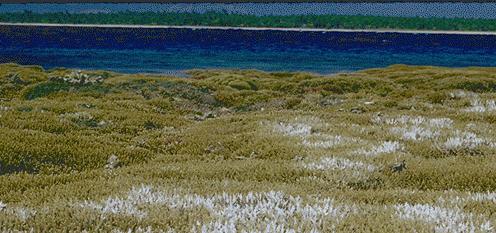



Cnidaria: Life History and Ecology
Cnidarian ecology is a complex subject indeed, because it is cnidarians, in particular corals, that are the builders of some of the richest and most complex ecosystems on the planet, coral reefs. Other cnidarians are important as predators in the open ocean.
Cnidarians generally occupy two major niches. They may use their cnidocysts to trap prey items. On the other hand, many cnidarians, anthozoans in particular, depend on zooxanthellae, symbiotic dinoflagellates within the tissues, to survive. These single-celled protists carry out photosynthesis within the animal's tissues, and pass on the carbon compounds they fix to their hosts; corals, therefore, are photosynthetic animals in a sense.
Some cnidarians are nearly completely dependent on zooxanthellae; others trap prey but augment their diet with zooxanthellae. While not all corals are dependent on symbionts — some live at great depths where there is never light — colonial, reef-forming corals depend on them; thus, reefs can only exist in shallow water. Notice the white areas on this coral reef exposed at low tide: this loss of symbionts, called bleaching, is deadly to coral reefs.

